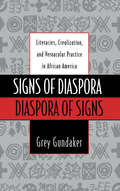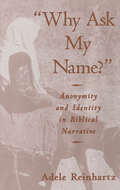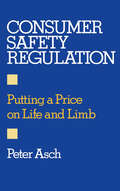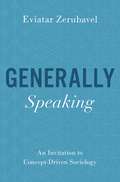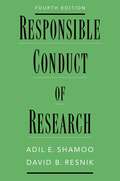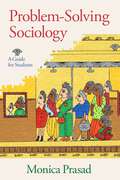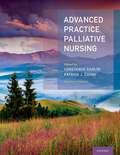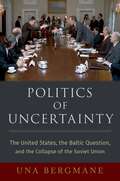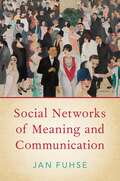- Table View
- List View
American Theatre: A Chronicle of Comedy and Drama, 1969-2000
by Thomas S. HischakVolume Four of the distinguished American Theatre: A Chronicle of Comedy and Drama series offers a thorough, candid, and fascinating look at the theater in New York during the last decades of the twentieth century.
Signs Of Diaspora / Diaspora Of Signs: Literacies, Creolization, And Vernacular Practice In African America
by Grey GundakerChallenging monolithic approaches to culture and literacy, this book looks at the roots of African-American reading and writing from the perspective of vernacular activities and creolization. It shows that African-Americans, while readily mastering the conventions and canons of Euro-America, also drew on knowledge of their own to make an oppositional repertoire of signs and meanings. Distinct from conventional script literacy on the one hand, and oral culture on the other, these "creolized" vernacular practices include writing in charms, use of personal or nondecodable scripts, the strategic renunciation of reading and writing as communicative tools, and writing that is linked to divination, trance, and possession. Based on extensive ethnographic research in the Southeastern United States and the West Indies, Gundaker offers a complex portrait of the intersection of "outsider" conventions with "insider" knowledge and practice.
Why Ask My Name?: Anonymity And Identity In Biblical Narrative
by Adele ReinhartzUnnamed characters--such as Lot's wife, Jephthah's daughter, Pharaoh's baker, and the witch of Endor--are ubiquitous in the Hebrew Bible and appear in a wide variety of roles. Adele Reinhartz here seeks to answer two principal questions: first, is there a "poetics of anonymity," and if so, what are its contours? Second, how does anonymity affect the readers' response to and construction of unnamed biblical characters? The author is especially interested in issues related to gender and class, seeking to determine whether anonymity is more prominent among mothers, wives, daughters, and servants than among fathers, husbands, sons and kings and whether the anonymity of female characters functions differently from that of male characters.
Consumer Safety Regulation: Putting A Price On Life And Limb
by Peter AschAdvocates of consumer safety regulation, an active and controversial area of public policy in the United States, contend that markets do not adequately protect the interests of vulnerable consumers; market traditionalists respond that public agencies increasingly make risk/safety decisions that individual citizens ought to be making for themselves. This book, written by an economist, critically assesses the rationales for, and the effects of, our major consumer safety programs. Addressed to a general audience, and incorporating relevant literature on cognitive psychology as well as economics, the author argues that although legitimate reasons for public protection of consumers exist in some markets, the particular programs we adopt often produce results that fall far short of what their advocates desire, and at least occasionally yield perverse outcomes.
Generally Speaking: An Invitation to Concept-Driven Sociology
by Eviatar ZerubavelIn this invitation to "concept-driven" sociology, defying the conventional split between "theory" and "methodology" (as well as between "quantitative" and "qualitative" research), Eviatar Zerubavel introduces a yet unarticulated "Simmelian" method of theorizing specifically designed to reveal fundamental, often hidden social patterns. Insisting that it can actually be taught, he examines the theoretico-methodological process (revolving around the epistemic and analytical acts of focusing, generalizing, "exampling," and analogizing) by which concept-driven researchers can distill generic social patterns from the culturally, historically, and domain-specific contexts in which they encounter them empirically. Disregarding conventionally noted substantive variability in order to uncover conventionally disregarded formal commonalities, Generally Speaking draws on cross-cultural, cross-historical, cross-domain, and cross-level analogies in an effort to reveal formal parallels across disparate contexts. Using numerous examples from culturally and historically diverse contexts and a wide range of social domains while also disregarding scale, Zerubavel thus introduces a pronouncedly transcontextual "generic" sociology.
Generally Speaking: An Invitation to Concept-Driven Sociology
by Eviatar ZerubavelIn this invitation to "concept-driven" sociology, defying the conventional split between "theory" and "methodology" (as well as between "quantitative" and "qualitative" research), Eviatar Zerubavel introduces a yet unarticulated "Simmelian" method of theorizing specifically designed to reveal fundamental, often hidden social patterns. Insisting that it can actually be taught, he examines the theoretico-methodological process (revolving around the epistemic and analytical acts of focusing, generalizing, "exampling," and analogizing) by which concept-driven researchers can distill generic social patterns from the culturally, historically, and domain-specific contexts in which they encounter them empirically. Disregarding conventionally noted substantive variability in order to uncover conventionally disregarded formal commonalities, Generally Speaking draws on cross-cultural, cross-historical, cross-domain, and cross-level analogies in an effort to reveal formal parallels across disparate contexts. Using numerous examples from culturally and historically diverse contexts and a wide range of social domains while also disregarding scale, Zerubavel thus introduces a pronouncedly transcontextual "generic" sociology.
Antiseizure Medications: A Clinician's Manual
by Ali A. Asadi-Pooya Michael R. SperlingThis new edition of Antiseizure Medications: A Clinician's Manual reflects the advances in the study and treatment of epilepsy in the past several years. As a practical tool for physicians and other healthcare providers, this text focuses on the selection and use of antiseizure medications in a variety of clinical contexts. In the past decade, many new antiseizure medications (ASMs) have been introduced, so that there are now approximately 30 medications available to treat epilepsy. The healthcare provider therefore has many choices. However, having many alternatives also allows for the possibility of choosing an inappropriate or a suboptimal agent. The choice of medication should be guided by knowledge and familiarity with the ASMs. In this new edition, the authors discuss choosing drugs when faced with various medical comorbidities; how to correctly prescribe, titrate, and taper drugs; how to monitor drug efficacy and side effects; how to diagnose and manage toxicity; interactions with other drugs; and other relevant issues. With updated references, terminology, materials, and drugs, this third edition meets the needs of clinicians who must treat their patients living with epilepsy.
Antiseizure Medications: A Clinician's Manual
by Ali A. Asadi-Pooya Michael R. SperlingThis new edition of Antiseizure Medications: A Clinician's Manual reflects the advances in the study and treatment of epilepsy in the past several years. As a practical tool for physicians and other healthcare providers, this text focuses on the selection and use of antiseizure medications in a variety of clinical contexts. In the past decade, many new antiseizure medications (ASMs) have been introduced, so that there are now approximately 30 medications available to treat epilepsy. The healthcare provider therefore has many choices. However, having many alternatives also allows for the possibility of choosing an inappropriate or a suboptimal agent. The choice of medication should be guided by knowledge and familiarity with the ASMs. In this new edition, the authors discuss choosing drugs when faced with various medical comorbidities; how to correctly prescribe, titrate, and taper drugs; how to monitor drug efficacy and side effects; how to diagnose and manage toxicity; interactions with other drugs; and other relevant issues. With updated references, terminology, materials, and drugs, this third edition meets the needs of clinicians who must treat their patients living with epilepsy.
Responsible Conduct of Research
by Adil E. Shamoo David B. ResnikResponsible Conduct of Research provides an overview of ethical, legal, and social issues in scientific research for science students, trainees, and professional scientists. This book gives an in-depth analysis of a wide array of topics, including ethical theory and decision-making, misconduct, questionable research practices, research record-keeping, data sharing, data auditing, reproducibility, authorship, publication, peer review, intellectual property, conflict of interest, mentoring, safe research environment, animal experimentation, research with human subjects, and social responsibility. Authors Adil E. Shamoo and David B. Resnik include several case studies and questions at the end of each chapter that can serve as a basis for further analysis and discussion. The concluding chapter of the book describes some steps that researchers, institutional officials, government agencies, and scientific organizations can take to promote ethical conduct in scientific research. In this 4th edition of Responsible Conduct of Research has been updated to include references and discussions of new and evolving topics, such as digital image manipulation, self-plagiarism, retractions, publication on pre-print servers, harassment, research with human biological samples, revisions to the Common Rule for research with human subjects, dual use research, the COVID-19 pandemic, providing science advice, and interactions with the media.
Responsible Conduct of Research
by David B. Resnik Adil E. ShamooResponsible Conduct of Research provides an overview of ethical, legal, and social issues in scientific research for science students, trainees, and professional scientists. This book gives an in-depth analysis of a wide array of topics, including ethical theory and decision-making, misconduct, questionable research practices, research record-keeping, data sharing, data auditing, reproducibility, authorship, publication, peer review, intellectual property, conflict of interest, mentoring, safe research environment, animal experimentation, research with human subjects, and social responsibility. Authors Adil E. Shamoo and David B. Resnik include several case studies and questions at the end of each chapter that can serve as a basis for further analysis and discussion. The concluding chapter of the book describes some steps that researchers, institutional officials, government agencies, and scientific organizations can take to promote ethical conduct in scientific research. In this 4th edition of Responsible Conduct of Research has been updated to include references and discussions of new and evolving topics, such as digital image manipulation, self-plagiarism, retractions, publication on pre-print servers, harassment, research with human biological samples, revisions to the Common Rule for research with human subjects, dual use research, the COVID-19 pandemic, providing science advice, and interactions with the media.
Problem-Solving Sociology: A Guide for Students
by Monica PrasadA broad resource that offers tools for how to conduct problem-solving sociology in order to deepen and reformulate our understanding of society. Most students arrive in graduate sociology programs eager to engage with the pressing social and political issues of the day. Yet that initial enthusiasm does not always survive the professional socialization of graduate school. In Problem-Solving Sociology, Monica Prasad shows graduate students and early career sociologists how to conduct research that uses sociological theory to help solve real-world problems, and how to use problem-solving to improve sociological theory. Prasad discusses how to be objective when examining issues of injustice and oppression, and provides methodological strategies and plenty of exercises for research aimed at creating change. She gives examples throughout of problem-solving research conducted at all levels, from undergraduate theses to the major figures of the discipline. She also considers how to respond to some common objections; where problem-solving fits into the landscape of sociological practice; and how to build a life in problem-solving.
Problem-Solving Sociology: A Guide for Students
by Monica PrasadA broad resource that offers tools for how to conduct problem-solving sociology in order to deepen and reformulate our understanding of society. Most students arrive in graduate sociology programs eager to engage with the pressing social and political issues of the day. Yet that initial enthusiasm does not always survive the professional socialization of graduate school. In Problem-Solving Sociology, Monica Prasad shows graduate students and early career sociologists how to conduct research that uses sociological theory to help solve real-world problems, and how to use problem-solving to improve sociological theory. Prasad discusses how to be objective when examining issues of injustice and oppression, and provides methodological strategies and plenty of exercises for research aimed at creating change. She gives examples throughout of problem-solving research conducted at all levels, from undergraduate theses to the major figures of the discipline. She also considers how to respond to some common objections; where problem-solving fits into the landscape of sociological practice; and how to build a life in problem-solving.
Advanced Practice Palliative Nursing 2nd Edition
by Constance Dahlin Patrick CoyneLike the first edition, this is a seminal textbook for the advanced practice nursing care of the seriously ill and dying. This comprehensive work addresses all aspects of palliative care including physical, psychological, social, and spiritual needs. It brings to the forefront current issues of health equity, managing through crisis, and meeting the needs of diverse populations. Each chapter contains case examples and a strong evidence base to support the highest quality of care. The text is written by leaders in the field and includes authors who have pioneered the role of the advanced practice nurse in palliative care. This volume offers advanced practice content and practical resources for clinical practice across all settings of care and encompassing all ages, from pediatrics to geriatrics. This newly revised edition has been reorganized to meet the needs of the APRN according to role delineation and practice issues. It offers foundation information on leadership, practice, and the various roles of the APRN as an administrator, educator, policy advocate, and researcher. The various settings of APRN work includes acute care settings (clinical care unit, intensive care unit, and emergency department), clinic (specialty care, primary care, and palliative care), community, rehabilitation, residential facilities, and telehealth. This edition also gives particular attention to special populations, including chapters on health disparities, economic disadvantages for urban dwellers, members of the LGBTQ+ community, Veterans, and Survivorship. There are sections wholly devoted to pediatric care, end of life communication, and the ethics APRNs have to navigate on a daily basis. Written by current APRNs for fellow APRNs, this text provides practical resources for clinical practice across a variety of topics.
Advanced Practice Palliative Nursing 2nd Edition
by Constance Dahlin Patrick CoyneLike the first edition, this is a seminal textbook for the advanced practice nursing care of the seriously ill and dying. This comprehensive work addresses all aspects of palliative care including physical, psychological, social, and spiritual needs. It brings to the forefront current issues of health equity, managing through crisis, and meeting the needs of diverse populations. Each chapter contains case examples and a strong evidence base to support the highest quality of care. The text is written by leaders in the field and includes authors who have pioneered the role of the advanced practice nurse in palliative care. This volume offers advanced practice content and practical resources for clinical practice across all settings of care and encompassing all ages, from pediatrics to geriatrics. This newly revised edition has been reorganized to meet the needs of the APRN according to role delineation and practice issues. It offers foundation information on leadership, practice, and the various roles of the APRN as an administrator, educator, policy advocate, and researcher. The various settings of APRN work includes acute care settings (clinical care unit, intensive care unit, and emergency department), clinic (specialty care, primary care, and palliative care), community, rehabilitation, residential facilities, and telehealth. This edition also gives particular attention to special populations, including chapters on health disparities, economic disadvantages for urban dwellers, members of the LGBTQ+ community, Veterans, and Survivorship. There are sections wholly devoted to pediatric care, end of life communication, and the ethics APRNs have to navigate on a daily basis. Written by current APRNs for fellow APRNs, this text provides practical resources for clinical practice across a variety of topics.
Politics of Uncertainty: The United States, the Baltic Question, and the Collapse of the Soviet Union (OXFORD STUDIES IN INTL HISTORY SERIES)
by Una BergmaneIn March 1990, Lithuania became the first Soviet Republic to declare its independence. Within weeks, the two other Baltic states, Estonia and Latvia, announced the beginning of a transition period toward full sovereignty. The Soviet Union, which considered the Baltic declarations illegal, harshly condemned them and imposed an economic blockade against Lithuania. Fearing an outbreak of violence in the region, the United States tried to de-escalate the crisis, pressuring all sides to engage in dialogue. Thirty years after the Soviet collapse Politics of Uncertainty investigates the interplay between international and domestic dynamics in the Soviet disintegration process. Based on extensive multilingual archival research, this book recovers the voices of local actors in Riga, Tallinn, and Vilnius in its examination of the triangular relations between Washington, Moscow, and Baltic independence movements. Occupied and annexed by the USSR in 1940, Estonia, Latvia, and Lithuania were the first Soviet republics to push the limits of Perestroika. The Baltic problem, at first seemingly minor, increasingly gained international visibility and by 1990 risked derailing issues that mattered in the eyes of both Soviet and American leaders--the transformation of the Soviet state and transformation of the European order. The United States, which had never recognized the annexation of the Baltic states, tried to perform a highly challenging balancing act of supporting Baltic independence without jeopardizing relations with the Kremlin. Meanwhile Mikhail Gorbachev, who saw the Baltics as an integral part of the USSR, was frustrated that their secessionist tendencies distracted from the monumental opportunity for change that the Perestroika project offered to his country and the world. Meanwhile, George Bush, François Mitterrand, and Helmut Kohl were exasperated that events at the margins of the Soviet empire risked destabilizing Gorbachev and souring East-West relations during negotiations over German reunification. By focusing on the relations between those at the top of global power hierarchies and those situated at their margins, Una Bergmane underscores how the Soviet collapse was driven much more by uncertainty, domestic pressures, and last-minute decisions than by long-term strategy--while warning about the tenuous geopolitical positions of these three states that joined NATO and the European Union after breaking out of the Soviet empire.
Politics of Uncertainty: The United States, the Baltic Question, and the Collapse of the Soviet Union (OXFORD STUDIES IN INTL HISTORY SERIES)
by Una BergmaneIn March 1990, Lithuania became the first Soviet Republic to declare its independence. Within weeks, the two other Baltic states, Estonia and Latvia, announced the beginning of a transition period toward full sovereignty. The Soviet Union, which considered the Baltic declarations illegal, harshly condemned them and imposed an economic blockade against Lithuania. Fearing an outbreak of violence in the region, the United States tried to de-escalate the crisis, pressuring all sides to engage in dialogue. Thirty years after the Soviet collapse Politics of Uncertainty investigates the interplay between international and domestic dynamics in the Soviet disintegration process. Based on extensive multilingual archival research, this book recovers the voices of local actors in Riga, Tallinn, and Vilnius in its examination of the triangular relations between Washington, Moscow, and Baltic independence movements. Occupied and annexed by the USSR in 1940, Estonia, Latvia, and Lithuania were the first Soviet republics to push the limits of Perestroika. The Baltic problem, at first seemingly minor, increasingly gained international visibility and by 1990 risked derailing issues that mattered in the eyes of both Soviet and American leaders--the transformation of the Soviet state and transformation of the European order. The United States, which had never recognized the annexation of the Baltic states, tried to perform a highly challenging balancing act of supporting Baltic independence without jeopardizing relations with the Kremlin. Meanwhile Mikhail Gorbachev, who saw the Baltics as an integral part of the USSR, was frustrated that their secessionist tendencies distracted from the monumental opportunity for change that the Perestroika project offered to his country and the world. Meanwhile, George Bush, François Mitterrand, and Helmut Kohl were exasperated that events at the margins of the Soviet empire risked destabilizing Gorbachev and souring East-West relations during negotiations over German reunification. By focusing on the relations between those at the top of global power hierarchies and those situated at their margins, Una Bergmane underscores how the Soviet collapse was driven much more by uncertainty, domestic pressures, and last-minute decisions than by long-term strategy--while warning about the tenuous geopolitical positions of these three states that joined NATO and the European Union after breaking out of the Soviet empire.
Garner's Modern English Usage
by Bryan A. GarnerThe most original and authoritative voice of today's English lexicography presents a fully revised new edition of his beloved usage dictionary When Bryan Garner published the first edition of A Dictionary of Modern American Usage in 1999, the book quickly became one of the most influential style guides ever written for the English language. After four previous editions and over twenty years, our language has evolved in many ways, and the powerful tool of big data has revolutionized lexicography. This extensively revised new edition fully captures these changes, featuring a thousand new entries and over two hundred replacement entries, thoroughly updated usage data and ratios on word frequency based on the Google Ngram Viewer, a more balanced coverage of World Englishes, not just American and British, and the inclusion of gender-neutral language. However, one thing has not changed: in no sense is this a "regular" dictionary but a masterpiece of lexicography written with wit and personality by one of the preeminent authorities on the English language. To put it in David Foster Wallace's words, Garner's discussion of rhetoric and style still "borders on genius." From the (lost) battle between self-deprecating and self-depreciating to the misuse of it's for its, from the variant spelling patty-cake taking over pat-a-cake in American English to the singular uses of they, Garner explains the nuances of grammar and vocabulary and the linguistic blunders to which modern writers and speakers are prone, whether in word choice, syntax, phrasing, punctuation, or pronunciation. His empirical approach liberates English from two extremes: from the "purists" who maintain that split infinitives and sentence-ending prepositions are malfeasances and from the linguistic relativists who believe that whatever people say or write must necessarily be accepted. The purpose of Garner's dictionary is to help writers, editors, and speakers use the language effectively. And it does so in a playful and persuasive way that will help you sound "grammatical but relaxed, refined but natural, correct but unpedantic."
Social Networks of Meaning and Communication
by Jan FuhseIn Social Networks of Meaning and Communication, Jan A. Fuhse offers a coherent theory of social structures as networks of relations interwoven with meaning. Drawing upon and extending the relational sociology of Harrison White and Charles Tilly, Fuhse seeks to establish a theory of social networks. Using a broad range of classic and contemporary social theory, he reconceptualizes social networks as constituted in patterns of expectations that form, reproduce, and change over the course of communicative events. These events, he argues, are the basic building blocks of the social world. They lead to expectations about the behavior of actors and their interaction with others the meaning structure making for observable regularities of communication in social networks. Social Networks of Meaning and Communication lays out a relational and constructivist perspective of social networks, highlighting a number of implications for social relationships, groups, and collective actors, as well as ethnic categories and cultural differences, roles and institutions, gender and family relations, and methods of social network analysis. Its framework bridges the gap in social network research between technically sophisticated analyses and complex, elusive theorizing.
North to Boston: Life Histories from the Black Great Migration in New England
by Blake GumprechtBetween World War II and 1980, tens of thousands of Black people moved to Boston from the South as part of the Great Migration, one of the most consequential mass movements of people in American history. Black migration from the South transformed the city, as it did urban areas across the country. North to Boston is the first book to examine that important subject. Blake Gumprecht traces the history of this migration and explores its impacts in greater depth through the lives of ten individuals, each the subject of one chapter. Those chapters are short biographies based on extensive interviews by the author and are told in an engaging style that reflects the author's background as a journalist. The ten people featured came from six southern states. They fled racism, limited opportunity, and hopelessness, and moved north in pursuit of better jobs, equal treatment, and greater freedom. They settled in neighborhoods such as Roxbury, Dorchester, and Mattapan. They worked as teachers, factory workers, welders, and security guards. Their stories are emblematic of the experiences of Black people everywhere who left the South, and provide a rare glimpse into the lives of ordinary people living in one city's Black community. North to Boston brings to life the history of the Great Migration, revealing a hidden aspect of New England's history and shining a spotlight on a singularly important event in the making of Black Boston.
North to Boston: Life Histories from the Black Great Migration in New England
by Blake GumprechtBetween World War II and 1980, tens of thousands of Black people moved to Boston from the South as part of the Great Migration, one of the most consequential mass movements of people in American history. Black migration from the South transformed the city, as it did urban areas across the country. North to Boston is the first book to examine that important subject. Blake Gumprecht traces the history of this migration and explores its impacts in greater depth through the lives of ten individuals, each the subject of one chapter. Those chapters are short biographies based on extensive interviews by the author and are told in an engaging style that reflects the author's background as a journalist. The ten people featured came from six southern states. They fled racism, limited opportunity, and hopelessness, and moved north in pursuit of better jobs, equal treatment, and greater freedom. They settled in neighborhoods such as Roxbury, Dorchester, and Mattapan. They worked as teachers, factory workers, welders, and security guards. Their stories are emblematic of the experiences of Black people everywhere who left the South, and provide a rare glimpse into the lives of ordinary people living in one city's Black community. North to Boston brings to life the history of the Great Migration, revealing a hidden aspect of New England's history and shining a spotlight on a singularly important event in the making of Black Boston.
Intolerant Justice: Conflict and Cooperation on Transnational Litigation
by Asif EfratIn a globalized world, national legal systems often face dilemmas of international cooperation: Should our citizens stand trial in foreign courts that do not meet our standards? Should we extradite offenders to countries with a poor human rights record? Should we enforce rulings issued by foreign judges whose values are different from our own? Intolerant Justice argues that ethnocentrism--the human tendency to divide the world into superior in-groups and inferior out-groups--fuels fear and mistrust of foreign justice and sparks domestic political controversies: while skeptics portray foreign legal systems as dangerous and threatening, others dismiss these concerns. The book traces this dynamic in a range of fascinating cases, including the American hesitation to allow criminal trials of troops in the courts of NATO countries, the dilemma of extradition to China, and the European wariness toward U.S. civil judgments. Despite the growing role of law and courts in international politics, Intolerant Justice suggests that cooperation among legal systems often meets resistance and shows how this resistance can be overcome.
Intolerant Justice: Conflict and Cooperation on Transnational Litigation
by Asif EfratIn a globalized world, national legal systems often face dilemmas of international cooperation: Should our citizens stand trial in foreign courts that do not meet our standards? Should we extradite offenders to countries with a poor human rights record? Should we enforce rulings issued by foreign judges whose values are different from our own? Intolerant Justice argues that ethnocentrism--the human tendency to divide the world into superior in-groups and inferior out-groups--fuels fear and mistrust of foreign justice and sparks domestic political controversies: while skeptics portray foreign legal systems as dangerous and threatening, others dismiss these concerns. The book traces this dynamic in a range of fascinating cases, including the American hesitation to allow criminal trials of troops in the courts of NATO countries, the dilemma of extradition to China, and the European wariness toward U.S. civil judgments. Despite the growing role of law and courts in international politics, Intolerant Justice suggests that cooperation among legal systems often meets resistance and shows how this resistance can be overcome.
Dissemination and Implementation Research in Health: Translating Science to Practice
The ultimate guide to dissemination and implementation research for public health, medicine, and the social sciences In the past twenty years, dissemination and implementation (D&I) research has sought to narrow the gap between the discovery of new knowledge and its application in public health, mental health, and health care settings. The challenges of moving research to practice and policy are universal, and future progress calls for collaborative partnerships and cross-country research. The fundamental tenet of D&I research-taking what we know about improving health and putting it into practice-must be the highest priority. Dissemination and Implementation Research in Health is the definitive roadmap to effecting change in health and science from today's leading D&I researchers. With insights from around the globe, these scholars collectively address key issues in the field including how to evaluate evidence based on effective interventions, how to design an appropriate study, and how to track a set of essential outcomes. Their work has been updated in this third edition with a strong focus on health equity and new chapters on de-implementation, scale-up and sustainment, and training and capacity building. This new edition also focuses on barriers to uptake of evidence-based interventions in the communities where people live their lives and from the social service agencies, hospitals, and clinics where they receive care. Now in its third edition, Dissemination and Implementation Research in Health remains the quintessential guide to making research more consequential for researchers and practitioners in health and the social sciences.
Dissemination and Implementation Research in Health: Translating Science to Practice
by Ross C. Brownson, Graham A. Coldi TZ, Enola K. ProctorThe ultimate guide to dissemination and implementation research for public health, medicine, and the social sciences In the past twenty years, dissemination and implementation (D&I) research has sought to narrow the gap between the discovery of new knowledge and its application in public health, mental health, and health care settings. The challenges of moving research to practice and policy are universal, and future progress calls for collaborative partnerships and cross-country research. The fundamental tenet of D&I research-taking what we know about improving health and putting it into practice-must be the highest priority. Dissemination and Implementation Research in Health is the definitive roadmap to effecting change in health and science from today's leading D&I researchers. With insights from around the globe, these scholars collectively address key issues in the field including how to evaluate evidence based on effective interventions, how to design an appropriate study, and how to track a set of essential outcomes. Their work has been updated in this third edition with a strong focus on health equity and new chapters on de-implementation, scale-up and sustainment, and training and capacity building. This new edition also focuses on barriers to uptake of evidence-based interventions in the communities where people live their lives and from the social service agencies, hospitals, and clinics where they receive care. Now in its third edition, Dissemination and Implementation Research in Health remains the quintessential guide to making research more consequential for researchers and practitioners in health and the social sciences.
An Atlas of Drosophila Genes: Sequences and Molecular Features
by Gustavo MaroniDrosophila, the common fruit fly, is the most extensively studied of all organisms from the standpoint of genetics and cytology. This atlas summarizes what is known about the approximately 100 Drosophila genes for which the complete nucleotide sequence is known. Each entry includes a description of the gene's molecular organization and expression, the complete nucleotide and amino acid sequences, maps of interesting structures, highlights of functional features and promoter regulatory regions, and selected references to the primary literature. A separate section of the atlas considers different aspects of gene organization as they occur in the Drosophila genome. Topics covered include size correlations among various genetic elements, splicing signals, translation initiation signals, and codon bias. The work represents a new milestone in summarizing current information and making it easily accessible to geneticists and biologists.

